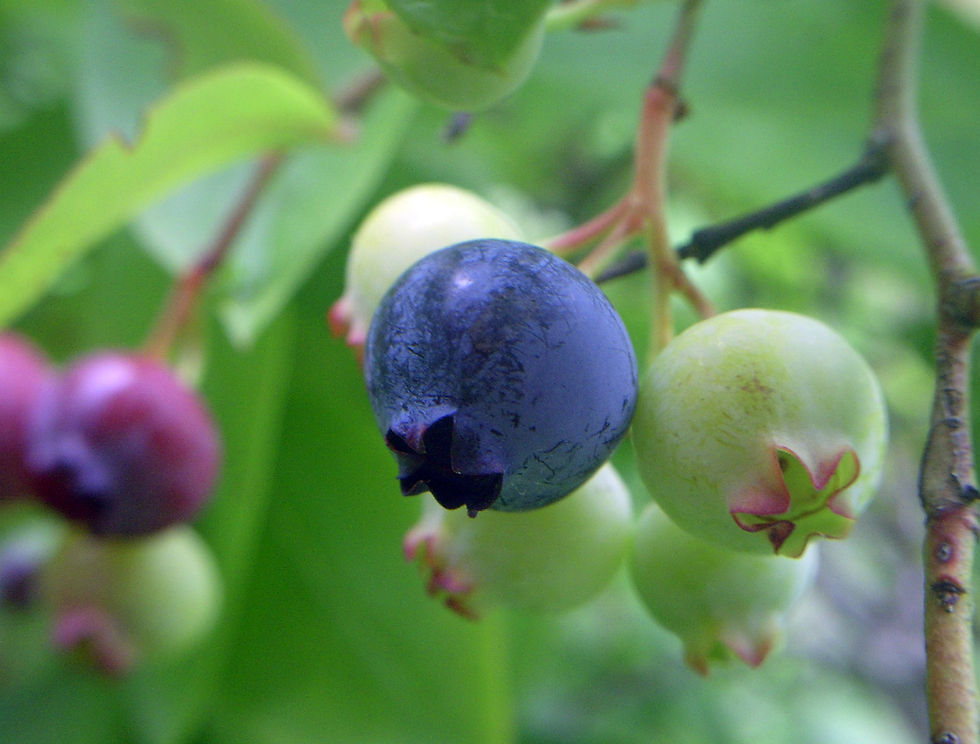Prickly -- or Not
- Jennifer Anderson

- Nov 10, 2022
- 2 min read
Updated: Jan 3, 2023

Those spiny hollies! I hated them as a kid, stepping on the sharp, fallen leaves with my bare feet.
Now I love them – not the spines but the trees for their beauty in the landscape and the many ways they support wildlife.
Early season nectar for bees. Berries for birds and deer to feed on during those cold winters when there’s little else for sustenance. Dense foliage for nesting and hiding.
And here’s the even better news: not all native hollies have sharp leaves, and they all are beautiful landscape plants. Of the approximately 15 hollies native to North America, here’s a close up of three at home in the Mid-Atlantic and up into New England – all sporting Very High pollinator values.

With winter, Christmas and perhaps snowfall around the corner, American Holly, Ilex opaca (the spiny one) is on a lot of people’s minds. Those gloriously brilliant red berries, almost translucent, against those dark, green leaves! Hollies color the season, and they look great with their dense foliage and pyramidal shape.
American Holly forms a small tree growing to about 20 feet tall with a girth of about 15 feet, making a great hedge. As with all hollies, only the females produce berries.

The hardiest of the hollies, ranging all the way into Ontario and Quebec, is Winterberry, Ilex verticillata (above), beloved by kids for its non-prickly leaves.
Like American Holly, Winterberry also has cheery, red berries, but its leaves fall off in early winter, so the berries really stand out against the bare branches.
Winterberry likes wet soil, but it can adapt to slightly drier conditions, and it likes full sun to part shade. Although stiff in its youth, Winterberry ages into a beautifully broad, round form, as wide as it is tall. A nice hedge or specimen.

Lastly, Inkberry, Ilex glabra, makes a great staple in the garden, a calm, dense, rounded evergreen presence among whatever other colorful delights abound.
While the straight species rounds out at 3 to 6 feet, the cultivar ‘Compacta’ tops out at about 4 feet and has a tighter habit.
Inkberry’s berries are black, so they don’t stand out as much in winter, but as possibly my favorite horticulturist Willian Cullina explains, “they do spend several weeks in fall as a lovely plum purple as they begin to ripen.”
Sources:
Cullina, William. Native Trees, Shrubs & Vines. Houghton Mifflin Company. 2002.
Ilex opaca, Missouri Botanical Garden. https://www.missouribotanicalgarden.org/PlantFinder/PlantFinderDetails.aspx?kempercode=k640
North Carolina Extension Gardener Plant Toolbox
Paulus, Kristine. “All Eyes on Ilex: Highlights from the Holly Collection.” New York Botanical Garden. January 22, 2021. https://www.nybg.org/planttalk/all-eyes-on-ilex-highlights-from-the-holly-collection/
Strauch, Betsy. “Herb to Know: Winterberry.” Mother Earth Living. (2022). https://www.motherearthliving.com/gardening/plant-profile/AN-HERB-TO-KNOW-43/





Comments